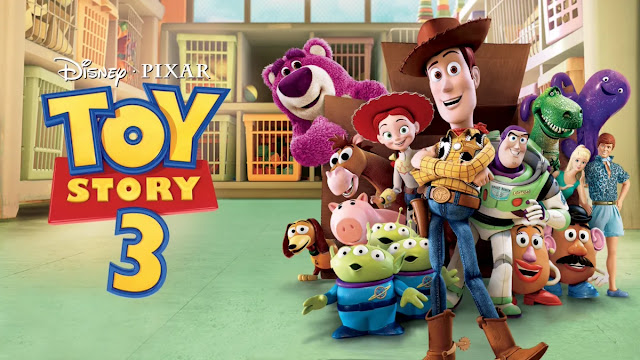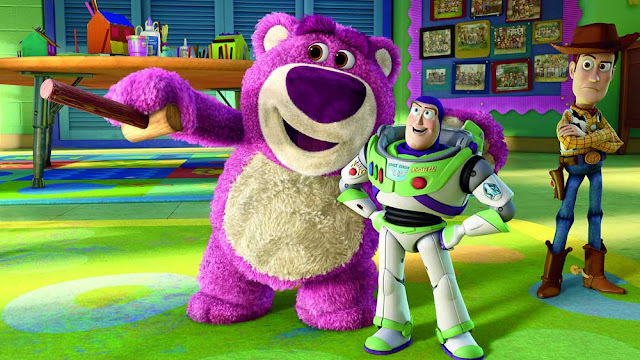Every few years The Walt Disney Company gets into financial trouble and in their panic green-lights a slew of guaranteed money makers in an attempt to right the ship. This has been going on for the past couple of decades as studios in general put large amounts of money into single properties thinking it’ll turn a huge profit and if it doesn’t it creates a financial crisis for them. Gone are the days when a $30 million box office was a big success. Disney is no stranger to being in these situations, especially as they have purchased more and more studios giving them access to the likes of Star Wars, Marvel and Indiana Jones, all of which have been faltering in one way or another lately. There was a time when the heads of Pixar, another Disney owned company, stated that they would not make another Toy Storyfilm unless the story justified it and not just because it would turn a profit. But Toy Story 4 came along unnecessarily just in the nick of time as Disney needed a big hit. Now that the live action remakes of classic Disney films have started to make less and less, the financial debacle of Indiana Jones and the Dial of Destiny, and Marvel’s current lack of focus, suddenly there is an announcement that Toy Story 5 is in development. Not money motivated, huh?
Toy Story 3 feels like a natural ending to this series with the toys version of the circle of life wrapped up neatly and a new child inheriting Woody and the gang. When looking at the three Toy Story films up to this point it completes an overall arc for these characters. When part three was announced there was some grumblings about returning to the well again but those grumblings fell silent when the final project was released. It was a heart warming story that wrapped up the tail quite nicely. Honestly it should have stayed that way. But this isn’t a look at the four movies as a whole; this is a look at part three and why it, of all of them, got a Best Picture nomination. What makes it better than the other two? Is it better than those two or just a beneficiary of having more films eligible for the Best Picture nomination, a change implemented just the previous year?
Like the previous installments, Toy Story 3 opens with a fantasy sequence, this time from the imagination of Andy (John Morris), the young boy who owns Woody, the cowboy (Tom Hanks) and Buzz Lightyear, the space ranger (Tim Allen). Flash forward to the present day and Andy is packing to leave for college, no longer playing with his old toys. He’s told to divide his stuff up into what is going with him to college, what is trash, what to donate to a daycare, and what will go into storage in the attic. He selects Woody to go with him and packs the rest of the toys into a trash bag for the attic. But the attic bag gets accidentally placed on the curb with the trash. The bagged toys, Buzz Lightyear, Jessie (Joan Cusack), Mr. and Mrs. Potato Head (Don Rickles and Estelle Harris), Rex (Wallace Shawn), Hamm the Piggy Bank (John Ratzenberger), and Barbie (Jodi Benson) escape the bag and, thinking Andy was throwing them away, climb into the box destined for the daycare. Woody tries to persuade them Andy wasn’t throwing them away but they are determined to move on, tired of no longer being played with. Andy’s mother shows up before Woody can leave and the whole crew end up at the daycare as donated toys.
First looks make the daycare appear like an ideal environment with the kids constantly being rotated out as they outgrow the toys. But the daycare has a dark secret. The toys are being controlled by Lots-o-Huggen’ Bear (Ned Beatty), a bitter stuffed bear that was accidentally lost by his owner and replaced. He runs the daycare like it’s a prison, relegating the less desirable toys to the youngest kids who abuse the toys mercilessly. There’s a Ken doll there that romances Barbie and Lots-o factory resets Buzz Lightyear so he can use him to guard the rest of the toys. Woody escapes and ends up in the hands of Bonnie (Lori Allen), a shy but imaginative little girl much like Andy once was. The rest of the movie is an elaborate escape film along the lines of The Great Escape.
Toy Story was a film about what happens when boys find the next cool thing to play with. Toy Story 2 tackled both damaged toys as well as outgrowing them, the later in the form of newcomer Jessie who was left behind by her owner when she grew too old to play with her anymore. This was poignantly dramatized with the heart wrenching song “When She Loved Me,” a musical number that brought many children to tears and was sure to give parents trouble at home over getting rid of the old toys those same kids had in their rooms. Toy Story 3 takes that little moment and blows it up to feature length with Andy’s inevitable growing up. In some ways this is reminiscent of The Brave Little Toaster, a film with similar themes. This isn’t new territory but it struck a chord with audiences, especially ones that were children themselves in 1995 and had the Toy Story merchandise growing up.
The escape sequences are filled with references to prison escape films including the great Stalag 17. For kids this kind of detail will go over their heads but their grandparents will get a kick out of these little moments. But it’s more than just references. It’s also well written and portrayed. How Buzz Lightyear is rescued from his “brainwashing” is unique and humorous as he is accidentally switched over to a Spanish language setting complete with matching mannerisms. This Spanish Buzz Lightyear sets his eyes on Jessie and attempts to woo her with his native charm and traditional dance moves. This also plays up the romance between the two that was only hinted at in the finale of Toy Story 2 adding just a touch of character continuity between the two films.
Toy Story 3 struck just the right notes of childhood nostalgia and sentimentalism to endear itself to audiences, old and young. It also has one heck of a villain in Lots-o whose motivations are understandable but his actions are not. He has an opportunity to do the right thing at a key moment in the finale and instead chooses to hold on to his bitterness, saving himself while leaving the others to possibly die in a garbage incinerator. It’s at this moment that Toy Story 3 goes from being merely a children’s film that appeals to adults, too, to a film with some dark and mature themes. The toys are facing their demise in a fiery furnace and the film focuses on how they comfort each other in the face of this certain doom. It’s dark and intense and more than one kid was sobbing their eyes out at this point in the theaters. Of course the toys are not going to be destroyed. We know that deep down but in the heat of the moment it’s just conceivable that things might go that dark.
This is a Disney film, though, and as such it’s going to end on a happy note. It ends the trilogy back where it started back in 1995 with a little kid playing with her toys, imagining all sorts of elaborate scenarios. Andy donates all of the toys, including his favorite, Woody, to Bonnie. Before he leaves for college he spends one last afternoon playing with his toys, showing Bonnie how each of the characters can make up an elaborate narrative all in the mind. It’s a fitting denouement to this bittersweet tale that has been an ever presence in people’s lives for fifteen years at this point. The concept hadn’t worn thin yet and people who were kids back in 1995 were now able to bring their own kids to see Woody and the gang. The franchise had not yet grown cynical and all about the cash grab. That would happen in 2019 when this franchise took its first big misstep.
Academy Award Nominations:
Best Picture: Darla K. Anderson
Best Adapted Screenplay: Michael Arndt, John Lasseter, Andrew Stanton and Lee Unkrich
Best Animated Feature: Lee Unkrich (won)
Best Sound Editjng: Tom Meyers and Michael Silvers
Best Original Song: Randy Newman for “We Belong Together.” (won)
____________________________________________________
Release Date: June 18, 2010
Running Time: 103 Minutes
Rated G
Starring: Tom Hanks, Tim Allen, Joan Cusack, Don Rickles, Wallace Shawn, John Ratzenberger, Estelle Harris, Ned Beatty, Michael Keaton, Jodi Benson and John Morris
Directed By: Lee Unkrich









Comments
Post a Comment